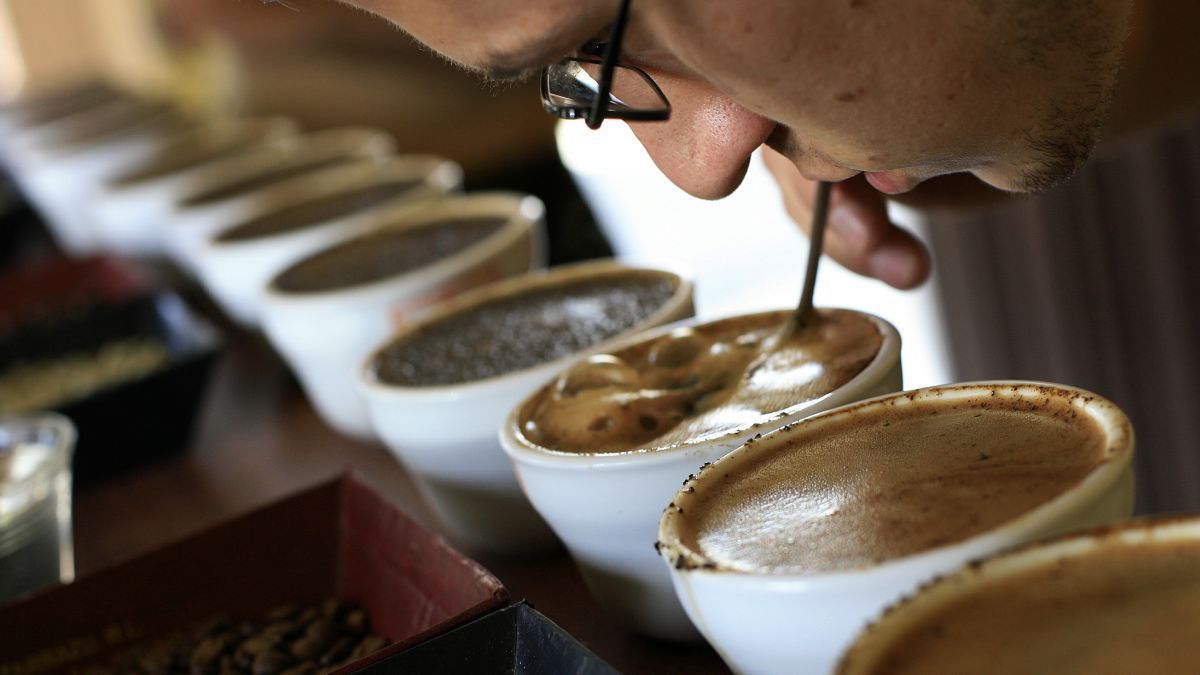Europeans are experiencing a notable increase in coffee prices, reminiscent of simpler times when an espresso could be enjoyed for just €1. However, what used to be a daily ritual for many in countries like Italy is now becoming an increasingly costly habit.
The price of coffee has surged across Europe, with a typical espresso now costing around €1.20 in Italy, reported Politico. The reasons behind this price hike are multifaceted, involving geopolitical events, climate change, economic factors, and new regulations, all contributing to the perfect storm that has hit the coffee market hard.
How are Houthis involved?
One of the most significant and unexpected contributors to the rising coffee prices in Europe is the increased activity of Yemen’s Houthi rebels in the Red Sea. These militants have been targetting cargo ships, leading to severe disruptions in the shipping routes that are critical for the global coffee supply chain.
A commodity analyst for Rabobank, Oran van Dort told Politico, “The Houthis have displayed their capabilities to be innovative by use of not just the drones they were using before, but underwater drones. They’ve shown more and more that they can do actual damage.”
The impact of these disruptions has been profound. Shipping routes have been forced to detour around the Cape of Good Hope, significantly increasing transport times and costs. The rerouting has led to a 150 per cent jump in container freight rates on the Asia-Europe route, with delays of up to three weeks for bean deliveries from major robusta coffee producers like Vietnam and Indonesia.
A Vietnam coffee exporter expressed concern, telling Reuters, “We are seeing a drop in new orders (from Europe) as buyers are bearing the (higher) shipping cost. We are very concerned. Normally, coffee exports peak during this time of the year.”
Impact Shorts
More ShortsWhat about the war in Ukraine?
The ongoing war in Ukraine has exacerbated the situation. The conflict has disrupted fertilizer supplies, crucial for coffee cultivation, and has driven up energy costs, impacting the roasting process.
As a result, the cost of raw green coffee has soared, with Arabica prices on the New York International Commodity Exchange rising from $1 per pound in early 2020 to over $2.50 by June 2023. Similarly, the London-based index for robusta coffee has climbed from $1.28 per kilogramme in February 2020 to $4.45 per kilogramme today.
Is climate change involved?
Beyond the geopolitical disruptions, climate change has also played a critical role in the escalating prices. Coffee crops are particularly sensitive to climate variations, and recent years have seen a series of adverse weather events affecting production.
In Brazil, the world’s largest coffee producer, heavy rains and pest infestations have reduced yields. Vietnam, the leading producer of robusta coffee, has faced prolonged droughts and higher temperatures, further constraining supply.
How is EU’s plan to tackle climate change backfiring?
Adding to the burden on coffee prices are new regulations from the European Union aimed at combating deforestation.
The EU’s regulation on deforestation-free products requires coffee producers to certify that their production processes do not contribute to deforestation.
Also Watch:
This has created additional costs and uncertainties for businesses, further driving up prices. The extensive data-gathering process required to comply with these regulations has made it more challenging and expensive for producers to bring their products to market.
Businesses are still unsure how the rules will be enforced, adding to the uncertainty and potential for further price increases.
What lies ahead?
Despite the current challenges, there is some optimism for the future. Experts like Oran van Dort of Rabobank believe that the current spike in prices may moderate in the medium term as farmers are incentivised to bring more supply to the market. Coffee production is expected to be in surplus next year, which could help alleviate some of the supply constraints.
However, the long-term outlook remains uncertain. Climate change continues to pose a significant threat to coffee production, with experts warning that half of the land currently used for coffee cultivation could become unsuitable by 2050.
In response, organisations like World Coffee Research and companies like Nestlé are investing in developing new coffee varieties that are more resistant to both temperature extremes and diseases.
With inputs from agencies
)